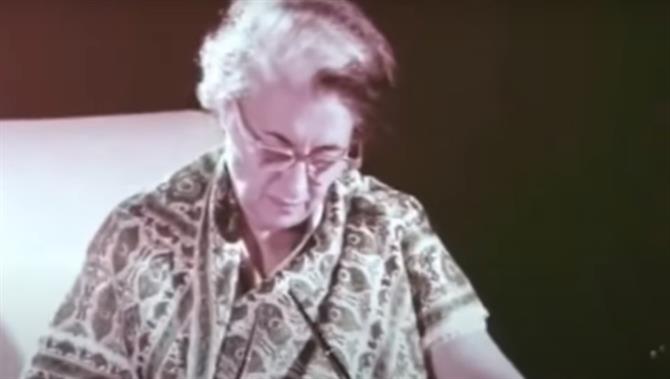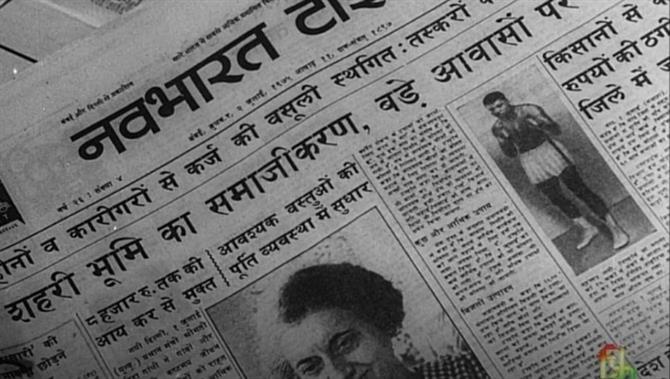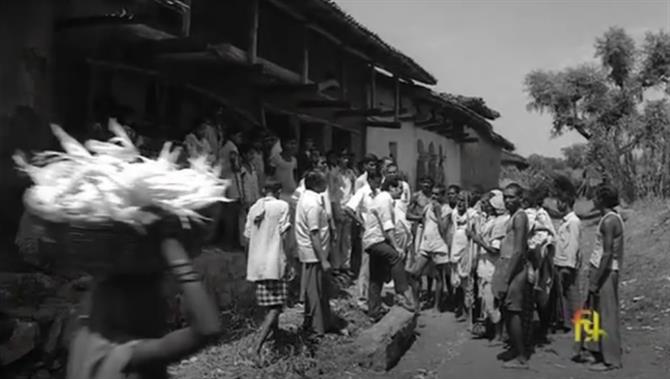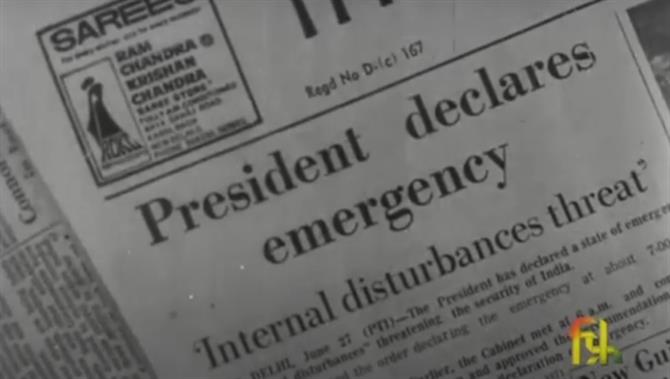When the Emergency was declared on 25 June 1975, the Films Division's resources were marshalled to defend the clampdown and sing the praises of Prime Minister Indira Gandhi and her Twenty Point Programme.
It is obvious today to anyone who watches them that the documentaries and newsreels produced by the Films Division of India (FD) conceal as much as they reveal. Set up as India’s official film production unit under the Ministry of Information & Broadcasting (MIB) in 1948, FD had the mission of informing the people of a new democracy about what their government is doing for them, and what the government in turn expects from them as responsible citizens. In short, propaganda. Even so, as Peter Sutoris illuminates in his book Visions of Development (2016), the various organs involved in the making of the films had a margin of creative autonomy that helped usher in some degree of artistry.
This was especially the case after the protean artist Jean Bhownagary took charge of the organisation when Indira Gandhi was heading the MIB. FD works of the late ‘60s and the early ‘70s are among the most innovative films ever created in the country. When the Emergency was declared on 25 June 1975, however, FD was forced back into its straitjacket; its resources were marshalled to defend the clampdown and sing the praises of the Prime Minister and her Twenty Point Programme. To be sure, apolitical work such as documentaries on art and culture were still produced, but the films made during 1975-77 that did deal with the political situation had to toe the official line more strictly than ever
This was especially the case after the protean artist Jean Bhownagary took charge of the organisation when Indira Gandhi was heading the MIB. FD works of the late ‘60s and the early ‘70s are among the most innovative films ever created in the country. When the Emergency was declared on 25 June 1975, however, FD was forced back into its straitjacket; its resources were marshalled to defend the clampdown and sing the praises of the Prime Minister and her Twenty Point Programme. To be sure, apolitical work such as documentaries on art and culture were still produced, but the films made during 1975-77 that did deal with the political situation had to toe the official line more strictly than ever.

While a straight-up hagiography like The Prime Minister (1976), which followed the dear leader’s everyday routine, still has currency in our political discourse, many FD films about the Emergency remain odd historical curios. One recurring theme was the futility of violence and militant protest. In shorts such as Kidhar Ja Rahe Ho (1975) and Kaisa Andhera (1975), decontextualised, stock images of violence are cut to a Hindi-movie-like song expressing dismay at the damage to public property being caused. In Maa Ki Pukar (1975), an errant young man is convinced by his mother, who bears a resemblance to the Prime Minister, that violence isn’t the solution to the nation’s problems.
But propaganda wasn’t limited to purveyors of kitsch alone. Even original voices like SNS Sastry were recruited into smoke and mirrors exercises. In a characteristic fashion, We Have Promises To Keep (1975) mixes approving street interviews, old-style documentary and violent contrasts to develop an impressionistic picture of a country where forces of order are at war with those of anarchy. Though not without some irreverent ambiguity (the film opens with a shot of a skull cut to one of Indira Gandhi’s eyes), Promises offers robust proof that the avant-garde can be put in service of pretty much any ideology.

The career of one particular filmmaker encapsulates the complex, conflicted public response to the Emergency. Sukhdev was a fierce independent who kept his distance from FD, finding real artistic footing in the organisation only after Bhownagary took over. In their righteous anger and their rejection of all-knowing voiceovers, Sukhdev’s earliest films, such as And Miles to Go... (1965) and India ’67 (1967), are a far cry from the patronising, didactic quality of the typical FD production. The years that followed, however, saw the filmmaker taking increasingly pro-government stances. For instance, in Voice of the People and A Few More Questions (both 1974), Sukhdev interviewed common people across social strata about their opinion on the impending all-India railway strike. Focusing on its potentially catastrophic effects rather than the demands driving it, these films present the strike as a selfish action of a few at the cost of many.
Compared to Sukhdev’s first films, Thunder of Freedom (1976) represents a volte-face both ideologically and stylistically. Though made of interviews of people opining on the political situation, the film is held together by the filmmaker’s authoritative voiceover, which interprets public unrest as an abuse of freedom. It walks us through the benefits of the Emergency using the same ‘before’ and ‘after’ model of the FD factory that Sukhdev’s early works violently rejected. With few exceptions, subjects talk to us about the welfare of slum resettlements, crackdown on profiteering and worker exploitation, quality control in ration shops, increased industrial productivity, and vast improvements in women’s safety and civic sense. All those interviewed express a concern that these changes might be reversed once the Emergency is removed.

One of Sukhdev’s last films, After the Silence (1976), presents arguably his most compelling case for the state’s iron fist. Politics remains out of the picture for the most part, the film probing into the horrific effects of legal and illegal bonded labour. The filmmaker is typically brash, even offensive, as he gathers testimonies from rural women sold into Delhi’s brothels, but the film retains a poetic, polemical force thanks to its stark photography and humanist conviction. Having established the urgency of problem, Sukhdev describes how the government has been able to abolish this practice and save thousands from unspeakable misery. It’s a wrenching film, disturbing in its methods but also empathetic in its exploration of intersectional poverty. Further, it demonstrates that Sukhdev’s relation to the state was more complex than it appears, that people were always at the focal point of his work.
A publication titled “White Paper on the Misuse of Mass Media During the Internal Emergency”, published under the new JP government in 1977, details the way the preceding regime abused the media, including FD, to glorify the Emergency and stoke a personality cult around its leader. This included commissioning a four-hour documentary on Indira Gandhi for an exorbitant sum of 11.9 lakh rupees. The document also hints at the special favours Sukhdev enjoyed, receiving projects directly from the MIB, without having to go through FD. At the same time, he wasn’t indispensable to the state, as no individual is. The MIB rejected one of his films, and he wouldn’t get any commissions from the JP government, which saw him as a collaborator in the Emergency.

An FD film made under the new government indirectly reveals what was, historically speaking, at stake during those 20 months. Directed by Sai Paranjpye, Freedom from Fear (1977) is a powerful account of the horrors of the Emergency: stories of torture, detention and disappearance, accounts of journalistic resistance and statements by students who had no choice but to become politicised. Unsurprisingly, the film promotes the new government as a champion of free speech that not only allows artists and reporters to criticise the state, but even offers a space on national television for the opposition to express itself. The film ends on an uplifting note, with images of children at school cut to a voiceover reading “Where the mind is without fear”.
What is most curious about the film is that we barely see images from the Emergency itself. When it wants to show public unrest, it employs footage from before the period, drawn from the FD archives as usual, like that of the railway strike of 1974 — footage that, ironically, Sukhdev had shot. This absence suggests that the Emergency is really a black hole in our cinematic historiography, which makes the oral testimonies in Paranjpye’s film, stilted and preciously few in number though they are, all the more valuable.
Srikanth Srinivasan is a film critic and translator from Bengaluru.